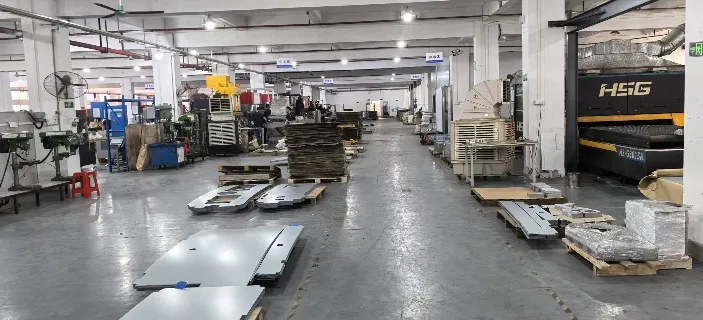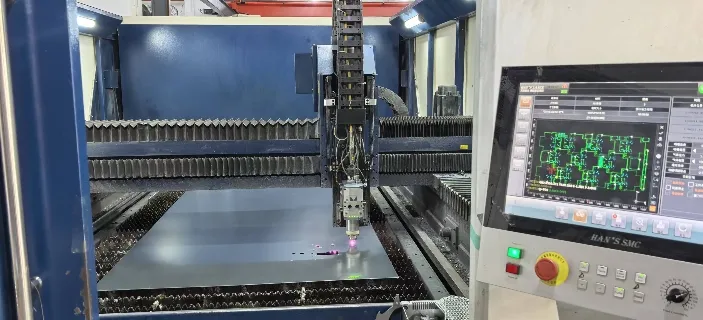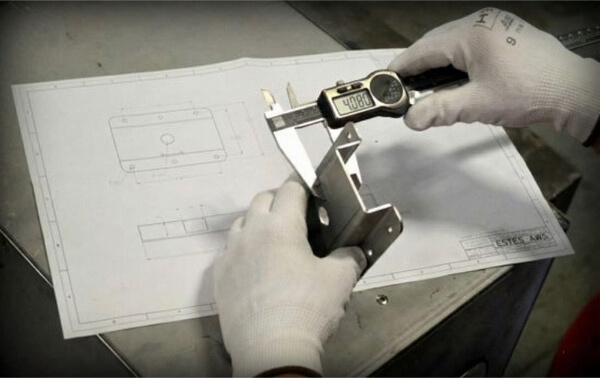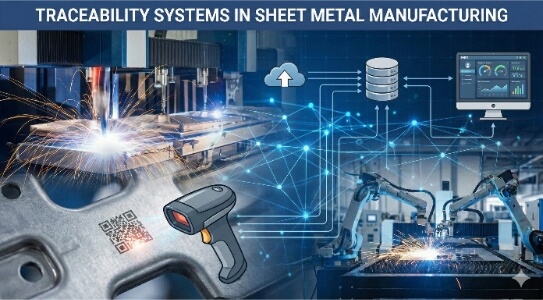Molti professionisti usano i termini "fabbricazione" e "produzione" senza rendersi conto che hanno significati diversi. Questo può creare confusione, soprattutto nella scelta dei fornitori o nella pianificazione della produzione. Se i termini non sono chiari, è facile scegliere il processo sbagliato, con conseguente spreco di tempo, denaro e fatica. Questo post chiarisce la differenza in termini semplici, in modo che possiate prendere decisioni migliori ed evitare problemi.
La fabbricazione è il processo di creazione di parti o strutture da materiali grezzi utilizzando metodi di taglio, piegatura e saldatura. La produzione è il processo più ampio di trasformazione delle materie prime in prodotti finiti. Comprende la fabbricazione ma anche l'assemblaggio, la lavorazione, l'imballaggio e altro ancora. La produzione è l'intero sistema e la fabbricazione è una fase al suo interno.
La fabbricazione e la produzione spesso si sovrappongono. Ma non sono la stessa cosa. Vediamo più da vicino come funzionano e dove si dividono.

Che cos'è la fabbricazione?
Fabbricare significa costruire pezzi a partire da materiali grezzi. Comporta il taglio, la piegatura, la saldatura o l'assemblaggio di metallo o altri materiali. Il termine deriva dal latino fabricare, che significa "fare".
La fabbricazione è un'attività standard nei settori edile, automobilistico, aerospaziale e della lavorazione dei metalli. Crea parti, strumenti o strutture personalizzate, di solito a partire da lamiere, tubi o barre di metallo.
Che cos'è la produzione?
La produzione è l'intero processo di trasformazione delle materie prime in prodotti finiti. Comprende molte fasi, come la lavorazione, la fusione, lo stampaggio, l'assemblaggio, il collaudo e l'imballaggio.
L'industria manifatturiera è utilizzata per la produzione di massa. Le fabbriche la utilizzano per realizzare prodotti in scala, dall'elettronica ai macchinari, dall'abbigliamento agli elettrodomestici.

Differenze chiave tra fabbricazione e produzione
I termini possono sembrare vicini, ma differiscono per finalità, scala e metodi. Vediamo come si confrontano su diversi fattori chiave.
Ambito di lavoro
La fabbricazione si concentra sulla modellazione e sull'unione di materiali per realizzare parti o strutture. La produzione copre l'intera catena, dalle materie prime ai prodotti confezionati pronti per il mercato.
Tipi di prodotti coinvolti
La fabbricazione produce solitamente componenti, telai o strutture, che possono far parte di un prodotto più grande. La produzione realizza i beni finali, come macchine, strumenti o prodotti di consumo.
Materiali usati
La fabbricazione utilizza principalmente metalli, plastiche e materiali compositi. La produzione utilizza questi materiali, ma comprende anche tessuti, prodotti chimici, vetro e altro ancora.
Volume e scala di produzione
La fabbricazione riguarda spesso lotti piccoli o medi. Supporta la prototipazione o i lavori personalizzati. La produzione è solitamente ad alto volume, con produzione su larga scala da linee di assemblaggio.
Livello di personalizzazione
La fabbricazione consente una maggiore flessibilità. Ogni pezzo può essere realizzato secondo specifiche uniche. La produzione mira all'uniformità, con processi ripetibili che garantiscono la coerenza.
Grado di automazione
La produzione utilizza una maggiore automazione, con sistemi robotici e macchine che lavorano in sincronia. Anche la fabbricazione può utilizzare macchine, ma spesso richiede più lavoro manuale o strumenti semi-automatici.
Tempistiche e tempi di realizzazione
I lavori di fabbricazione possono essere rapidi, soprattutto per i pezzi unici. La produzione richiede tempi più lunghi a causa delle fasi di impostazione, produzione e post-lavorazione.
Struttura dei costi e investimenti
La fabbricazione ha costi di avviamento più bassi e quindi è ideale per i bassi volumi o per i lavori personalizzati. La produzione richiede un capitale maggiore per le attrezzature, la manodopera e i sistemi di controllo del processo.
Requisiti di competenza della forza lavoro
I costruttori hanno bisogno di competenze tecniche come la saldatura, la piegatura e la lettura dei disegni. I team di produzione hanno bisogno di operatori, ingegneri, progettisti e addetti al controllo qualità.
Processi coinvolti
Ogni processo svolge un ruolo nella trasformazione della materia prima in qualcosa di utile. Ecco come le fasi differiscono tra fabbricazione e produzione.
Processi di fabbricazione comuni
Queste tecniche pratiche trasformano i materiali grezzi in pezzi personalizzati. Esaminiamo i metodi chiave che rendono la fabbricazione ideale per i progetti specializzati.
Taglio
Il taglio consiste nell'affettare il materiale grezzo nella forma o dimensione desiderata. I metodi includono taglio laser, taglio a getto d'acqua, E Taglio al plasma.
Saldatura
Saldatura unisce due o più pezzi di metallo. Crea un legame forte fondendo le parti e aggiungendo, se necessario, dello stucco.
Piegatura
Piegatura modella lamiere o barre piatte in angoli o curve. In questa fase vengono comunemente utilizzate presse piegatrici e rulli.
Assemblaggio
La fabbricazione comporta assemblaggio singole parti in un telaio o in una struttura finale. Può utilizzare viti, rivetti o saldature.
Processi produttivi comuni
La produzione di massa si basa su questi sistemi ripetibili. Scoprite come i produttori ottengono efficienza e coerenza su scala.
Lavorazione
La lavorazione rimuove il materiale da un blocco solido per modellarlo. Fresatura CNC e tornitura sono esempi popolari.
Stampaggio
Stampaggio consiste nel versare o iniettare materiale in uno stampo per formare dei pezzi. Si usa spesso con la plastica o la gomma.
Colata
Colata versa il metallo liquido negli stampi. Una volta che il metallo si è raffreddato e indurito, la forma è pronta per la finitura.
Produzione in linea di montaggio
Questo processo prevede l'assemblaggio di più componenti in una sequenza fissa. È progettato per una produzione ripetibile in grandi volumi e con variazioni minime.

Strumenti ed equipaggiamento
Ogni processo si basa su strumenti diversi per raggiungere obiettivi di produzione specifici. Il tipo di attrezzatura utilizzata spesso riflette la scala, la precisione e il livello di automazione del lavoro.
Macchinari in officine di fabbricazione
Le officine di fabbricazione utilizzano strumenti costruiti per modellare e unire i materiali. Le macchine più comuni includono:
- Taglierine laser per un taglio preciso delle lastre
- Presse piegatrici per la piegatura del metallo
- Stazioni di saldatura per l'unione dei pezzi
- Cesoie e seghe per rifilare o tagliare
- Strumenti di rivettatura e fissaggio per l'assemblaggio
Queste macchine sono spesso in grado di supportare brevi tirature e sono predisposte per cambi rapidi tra un lavoro e l'altro.
Macchinari negli impianti di produzione
Le configurazioni di produzione si concentrano su velocità, scala e ripetibilità. Le attrezzature tipiche comprendono:
- Macchine CNC per lavorazioni di alta precisione
- Macchine per lo stampaggio a iniezione di parti in plastica
- Macchine per la pressofusione di componenti metallici
- Nastri trasportatori e bracci robotici per linee di assemblaggio
- Sistemi di imballaggio automatizzati
Questi utensili fanno di solito parte di una linea di produzione estesa costruita per la produzione di massa.
Scelta tra fabbricazione e produzione
La scelta giusta dipende dagli obiettivi del progetto, dalle dimensioni dell'ordine e dalla tempistica. Ecco quando ogni metodo ha più senso.
Quando scegliere la fabbricazione?
La fabbricazione brilla quando il progetto richiede flessibilità. Queste situazioni richiedono una lavorazione artigianale piuttosto che una produzione di massa.
Progetti personalizzati e costruzioni uniche
La fabbricazione è ideale per i progetti personalizzati. Questo metodo offre maggiore controllo e flessibilità se avete bisogno di un pezzo con specifiche uniche o di un prototipo unico.
Requisiti di basso volume e alta precisione
La fabbricazione è più adatta quando la qualità è più importante della quantità. Consente di ottenere tolleranze ristrette, lavori dettagliati e un contributo manuale qualificato.
Quando scegliere la produzione?
La produzione domina quando la quantità e la consistenza contano di più. Ecco quando la produzione di grandi volumi ha più senso.
Esigenze di produzione di massa
La produzione è adatta agli ordini di grandi volumi. Consente processi ripetibili che producono lo stesso prodotto ripetutamente con risultati costanti.
Produzione su larga scala a costi contenuti
La produzione è la strada da seguire se si vuole ridurre i costi unitari e scalare rapidamente la produzione. I costi fissi vengono distribuiti su molte unità, con un risparmio a lungo termine.
Approcci ibridi
Alcuni progetti utilizzano sia la fabbricazione che la produzione. Questo mix aiuta a bilanciare la flessibilità con i volumi e i costi.
Ad esempio, la fabbricazione potrebbe essere utilizzata per creare staffe personalizzate o cornici. Questi vengono poi trasferiti in una linea di produzione per l'assemblaggio completo. È comune in settori come quello automobilistico o aerospaziale, dove alcuni pezzi richiedono una gestione speciale mentre altri seguono processi standard.
Questo approccio consente di eseguire lavori personalizzati senza rallentare l'intera produzione. Inoltre, aiuta le aziende ad adattarsi rapidamente alle mutevoli esigenze o agli aggiornamenti del design.
Conclusione
La fabbricazione e la produzione hanno scopi diversi ma complementari. La fabbricazione eccelle nei progetti personalizzati e a basso volume che richiedono precisione e flessibilità, come prototipi, elementi architettonici o parti di macchinari specializzati. La produzione domina la produzione in grandi volumi di articoli standardizzati, dove contano soprattutto l'efficienza dei costi e la coerenza, come nell'elettronica di consumo o nei componenti automobilistici.
Pronti a dare vita al vostro progetto? Che abbiate bisogno di una lavorazione di precisione, di una produzione su larga scala o di una soluzione ibrida, siamo a vostra disposizione. Richiedete un preventivo gratuito oggi stessoe trasformiamo le vostre idee in realtà!
Domande frequenti
La fabbricazione è un tipo di produzione?
Sì. La fabbricazione è una parte del processo produttivo complessivo. Si concentra sulla modellazione e sull'unione di materiali per creare componenti.
Un'officina di fabbricazione può occuparsi anche di produzione?
Alcuni possono. Molte officine di fabbricazione si concentrano su lavori personalizzati, ma alcune ampliano i loro servizi per includere l'assemblaggio e l'imballaggio di prodotti completi.
Quali industrie utilizzano sia la fabbricazione che la produzione?
Industrie come quella aerospaziale, automobilistica, edile e delle attrezzature industriali utilizzano spesso entrambe. Possono fabbricare telai o parti e produrre e assemblare il prodotto finale.
Come si decide quale utilizzare per il proprio prodotto?
Dipende dalle vostre esigenze. Scegliete la fabbricazione per lavori personalizzati, in piccoli lotti o di alta precisione. Scegliete la produzione per i grandi volumi, la costanza e i costi di produzione.
Ciao, sono Kevin Lee

Negli ultimi 10 anni mi sono immerso in varie forme di lavorazione della lamiera, condividendo qui le mie esperienze in diverse officine.
Contattate

Kevin Lee
Ho oltre dieci anni di esperienza professionale nella fabbricazione di lamiere, con specializzazione nel taglio laser, nella piegatura, nella saldatura e nelle tecniche di trattamento delle superfici. In qualità di direttore tecnico di Shengen, mi impegno a risolvere sfide produttive complesse e a promuovere innovazione e qualità in ogni progetto.




